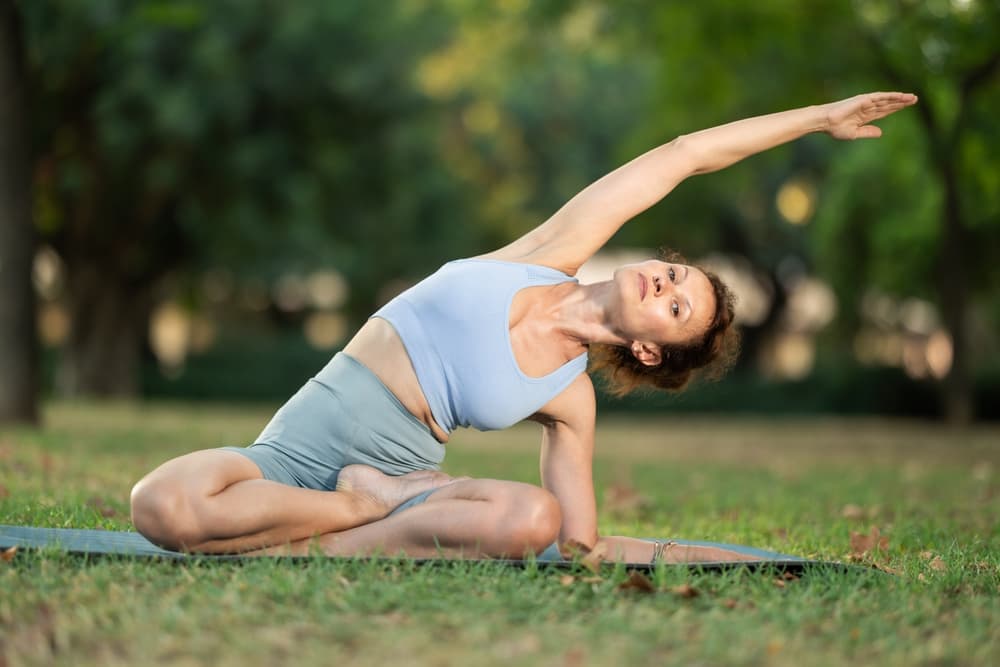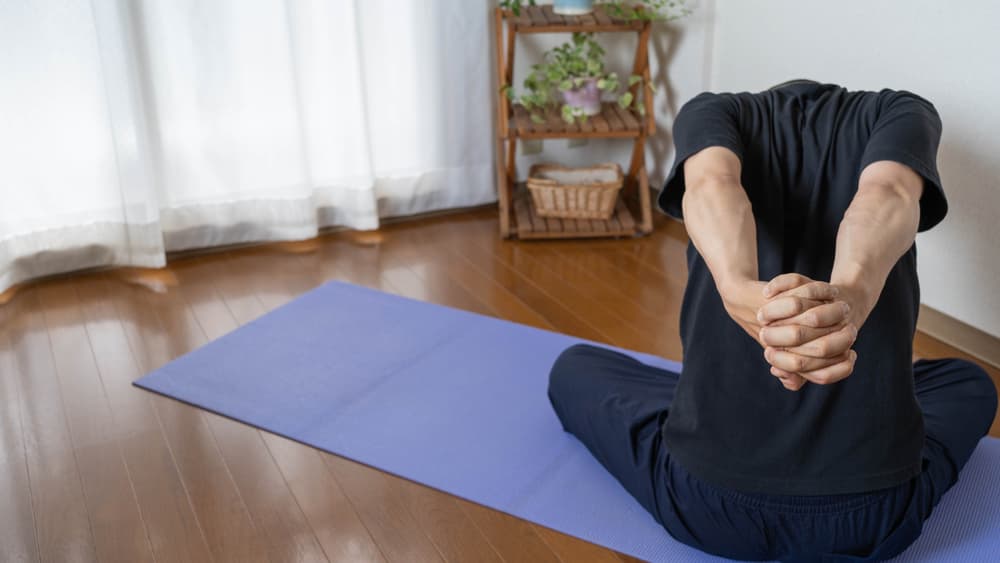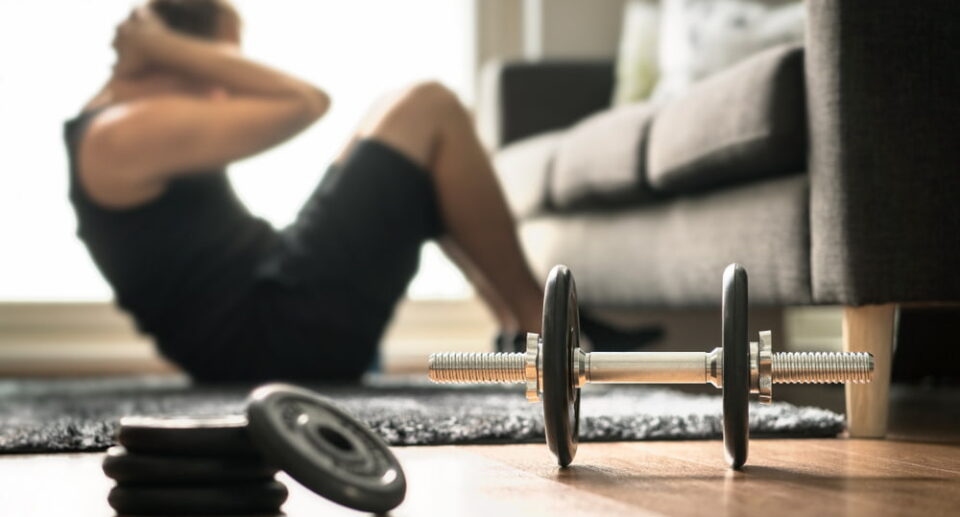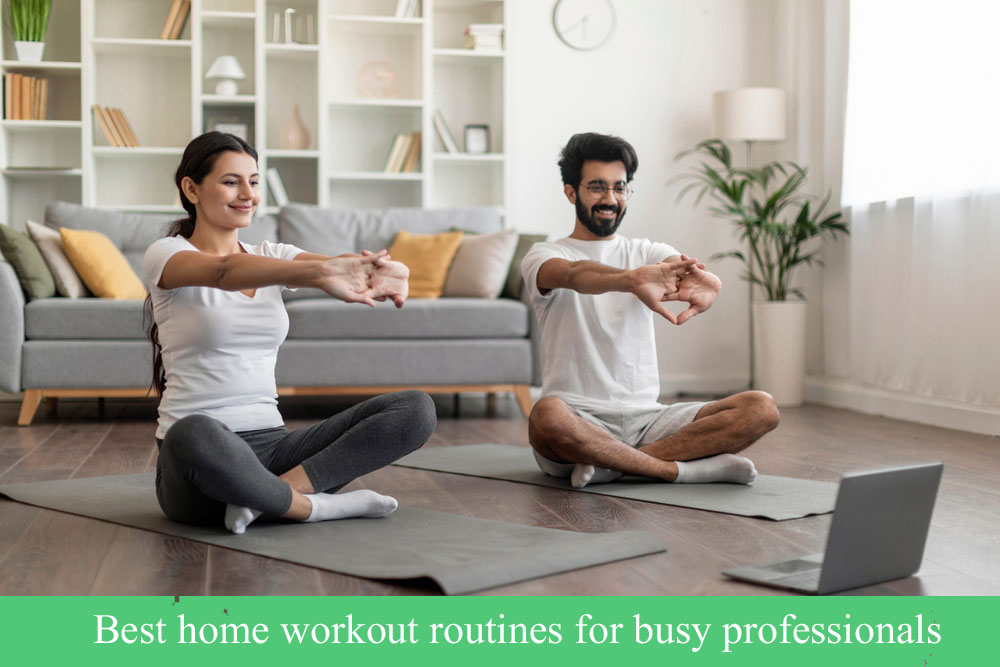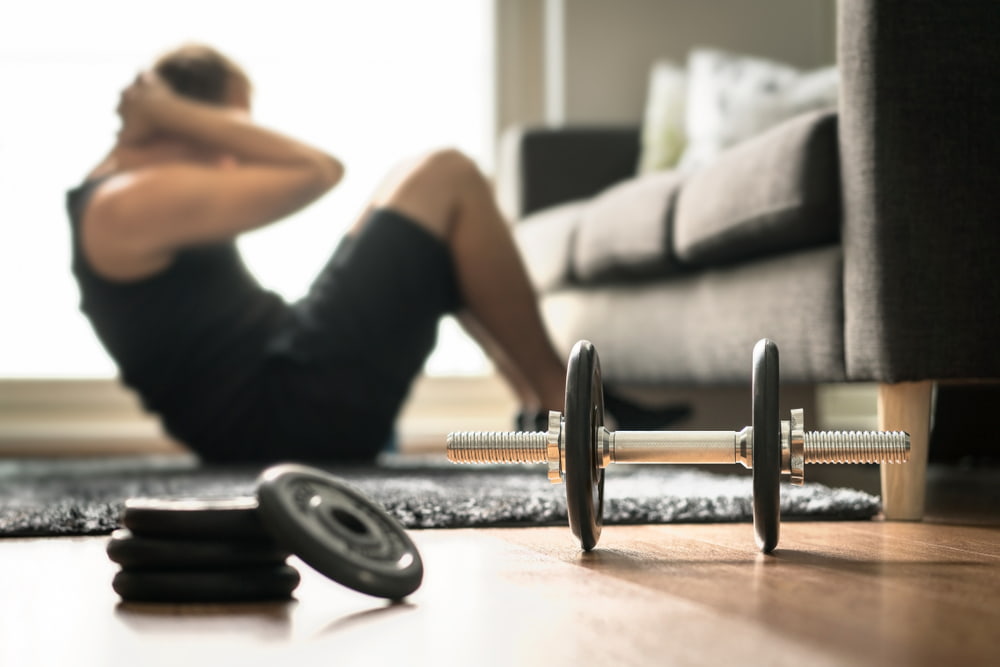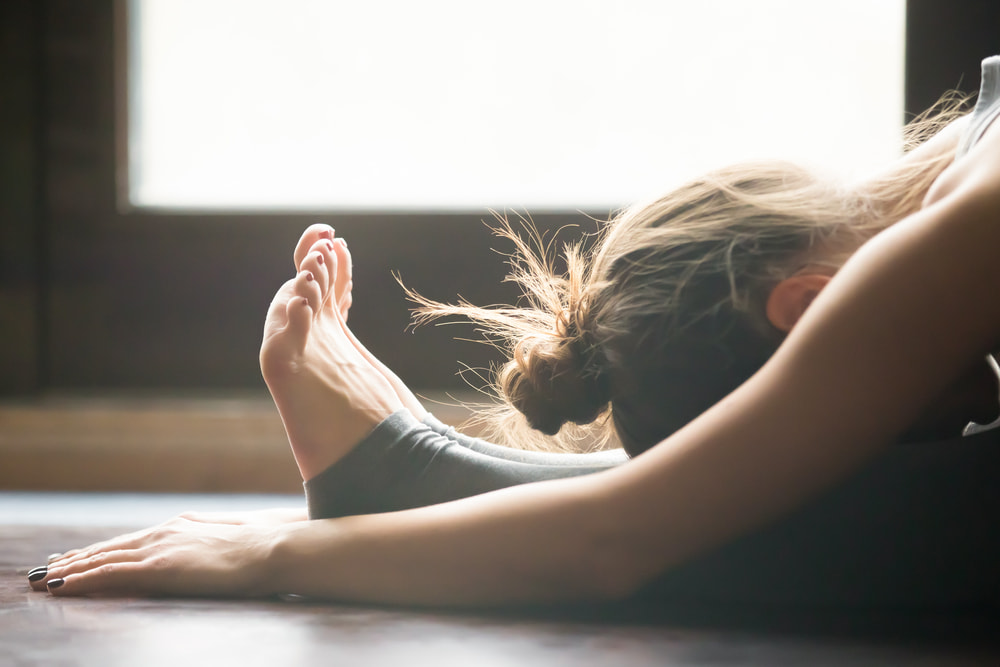Simple bodyweight exercises for beginners at home
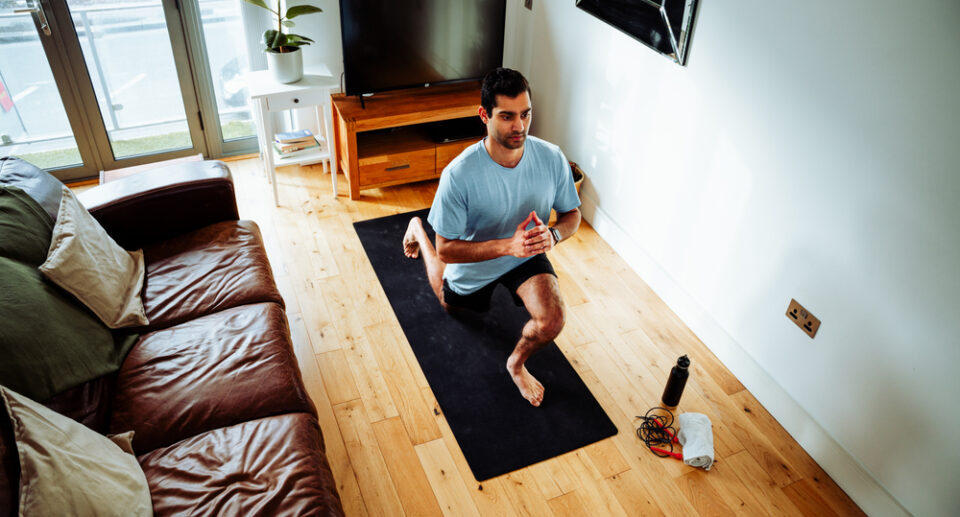

Why Choose Bodyweight Exercises?
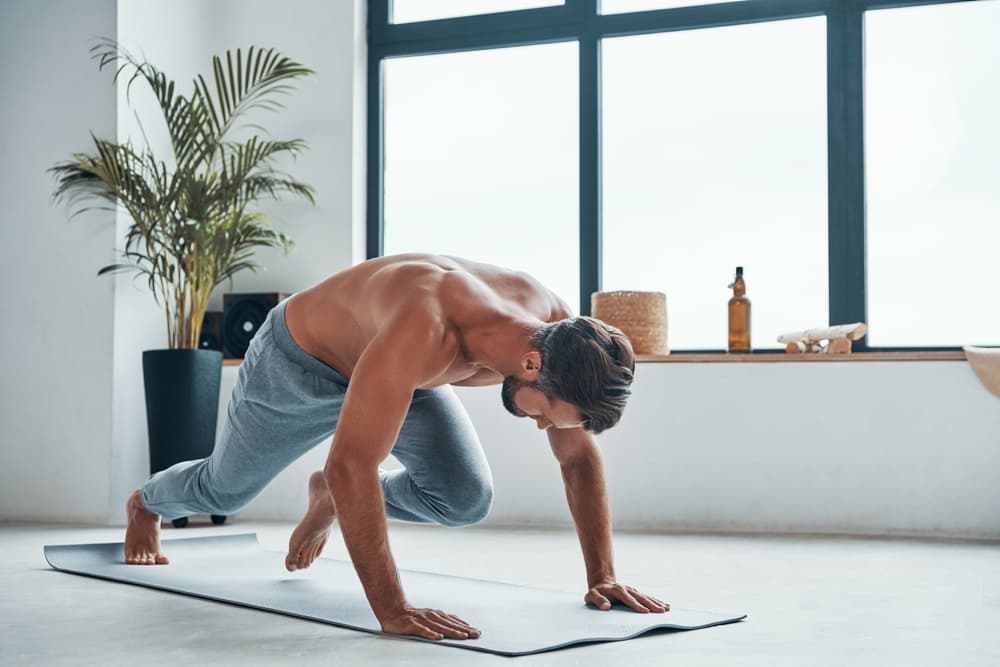

Bodyweight exercises are an excellent starting point for anyone embarking on a fitness journey. These exercises use your own body weight as resistance, eliminating the need for expensive gym memberships or equipment. This makes them ideal for busy individuals or those working out at home.
One of the key advantages of bodyweight workouts is their accessibility—you can do them anywhere, from your living room to a hotel room while traveling. They are also incredibly versatile, offering scalable options for all fitness levels. Beginners can start with basic movements, while more advanced exercisers can progress to challenging variations.
Bodyweight exercises engage multiple muscle groups, promoting full-body strength and functional fitness. They also help improve balance, flexibility, and coordination. For busy professionals, these workouts are efficient, with routines that can be completed in just 15-30 minutes. Research highlights their effectiveness in improving cardiovascular health and mental well-being when done consistently.
Sarah, a marketing executive, is a prime example of success with bodyweight exercises. She started with 15-minute sessions and lost 15 pounds in six months. Her energy levels and confidence soared. Bodyweight exercises are more than convenient; they are a sustainable and impactful way to achieve fitness goals.
The Benefits of Bodyweight Workouts
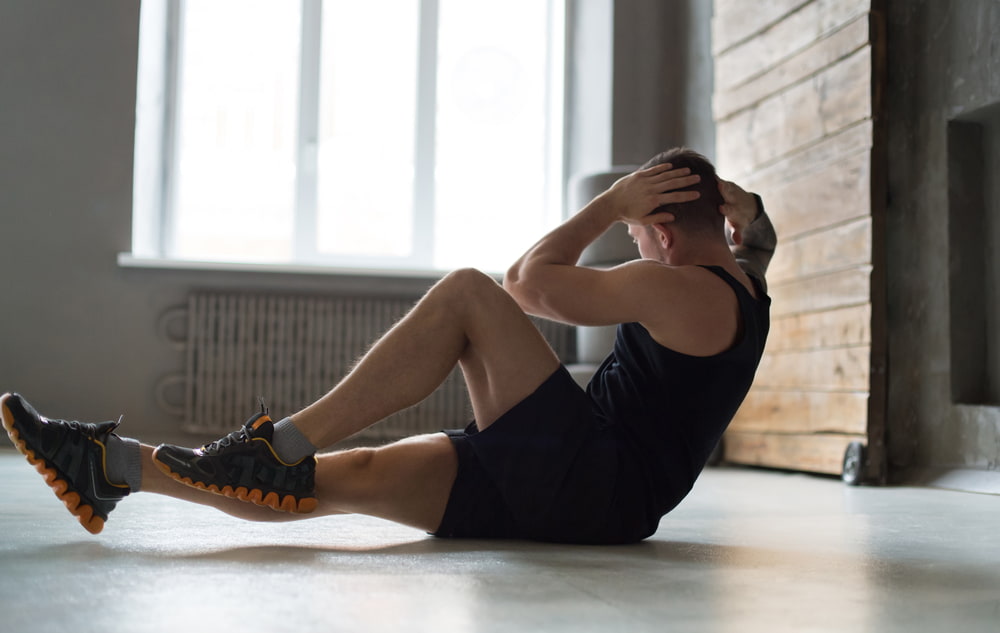

Bodyweight exercises are an excellent choice for anyone starting their fitness journey. Here’s why:
- No Equipment Needed: Perfect for those working out at home or on a tight budget.
- Convenience: Perform these exercises anywhere, whether in your living room or while traveling.
- Scalable for All Levels: Suitable for beginners and easily adjustable as you gain strength and confidence.
- Full-Body Engagement: Many bodyweight exercises target multiple muscle groups, giving you a balanced workout.
Busy Schedules? No Problem
For working professionals, finding time to hit the gym can be challenging. Bodyweight workouts are:
- Quick: Effective routines can be done in 15-30 minutes.
- Flexible: Fit them into your morning routine, lunch break, or evening wind-down.
- Effective: Studies show that even short workouts can improve cardiovascular health, strength, and mental well-being.
A Success Story — Sarah’s Journey
Sarah, a 35-year-old marketing executive, struggled to find time for fitness. She started with 15-minute bodyweight workouts three times a week. Within six months, she lost 15 pounds, improved her energy levels, and felt more confident. Her favorite moves? Squats and push-ups.
FAQ – Common Questions About Starting Bodyweight Workouts
- Q: How often should beginners do bodyweight exercises?
- A: Aim for 2-3 times a week to start. Increase frequency as you progress.
- Q: Do bodyweight exercises help with weight loss?
- A: Yes, especially when paired with a balanced diet. High-rep bodyweight circuits can boost calorie burn and aid fat loss.
Essential Bodyweight Exercises for Beginners
Full-Body Beginner Exercises
Here are the foundational moves every beginner should master:
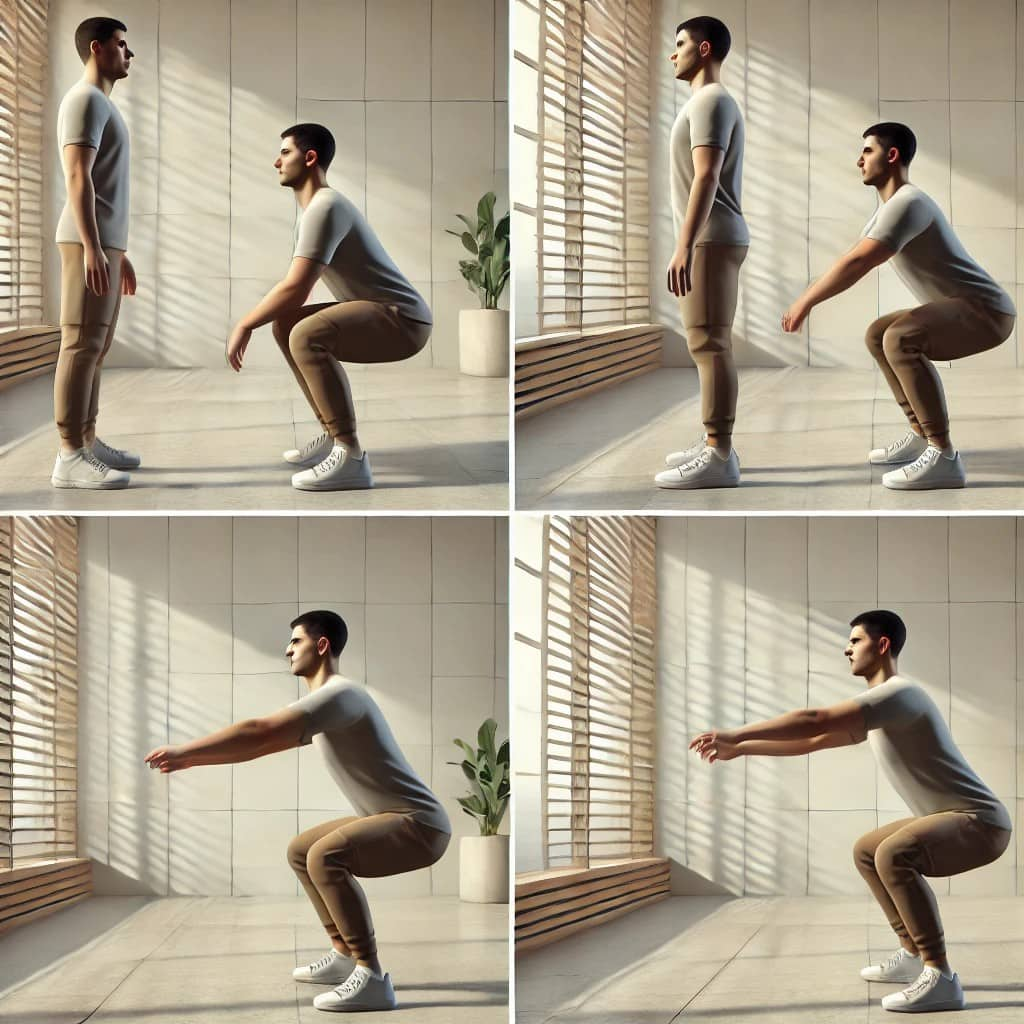

1. Squats
- Muscles Targeted: Quads, glutes, hamstrings.
- How to Perform:
- Stand with feet shoulder-width apart.
- Lower your body by bending your knees, keeping your back straight.
- Stop when your thighs are parallel to the floor.
- Return to the starting position.
- Repetitions: Start with 10-12 reps, 2 sets.
- Tip: Keep your heels on the ground and avoid letting your knees go past your toes.
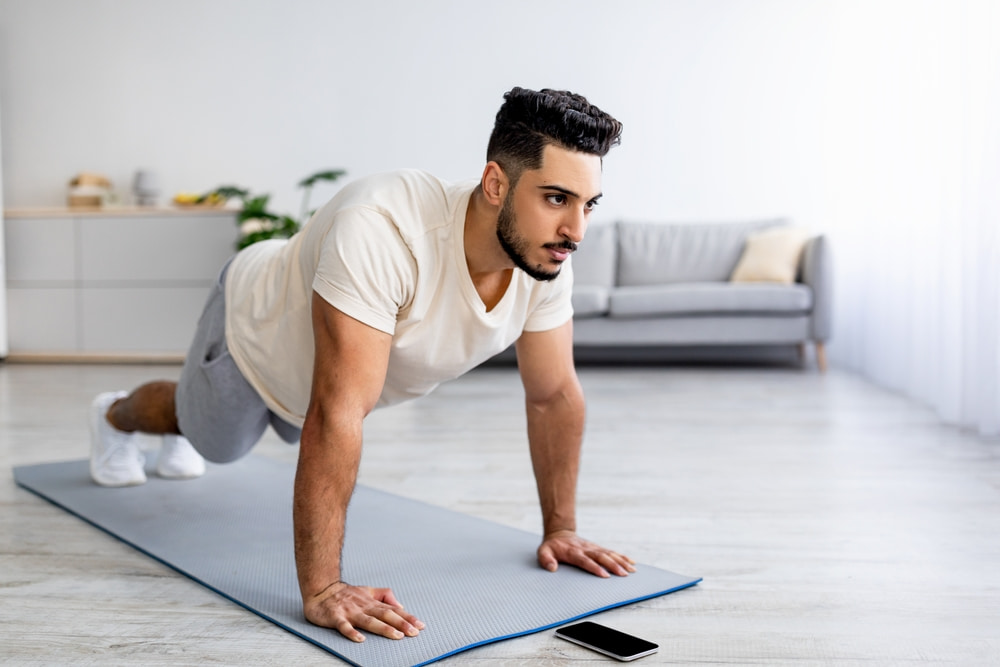

2. Push-Ups
- Muscles Targeted: Chest, shoulders, triceps, core.
- How to Perform:
- Begin in a plank position with hands under shoulders.
- Lower your body until your chest nearly touches the floor.
- Push back to the starting position.
- Repetitions: Start with 5-8 reps, 2 sets.
- Tip: Modify by doing push-ups on your knees if needed.


3. Plank
- Muscles Targeted: Core, shoulders, back.
- How to Perform:
- Lie face down, then prop yourself up on forearms and toes.
- Keep your body straight, avoiding sagging hips.
- Hold the position for 20-30 seconds.
- Tip: Focus on breathing and keeping your core engaged.
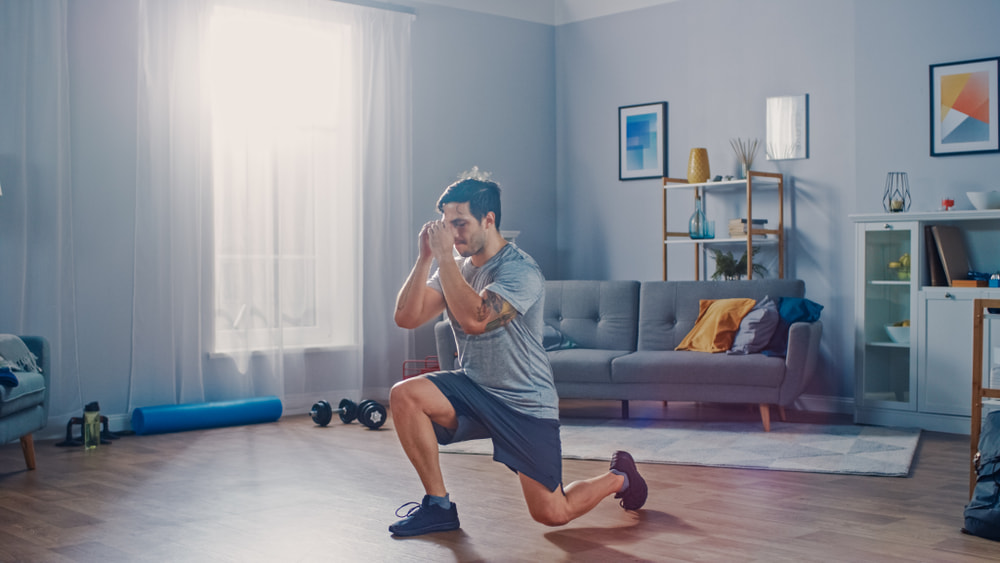

4. Lunges
- Muscles Targeted: Glutes, quads, hamstrings.
- How to Perform:
- Step forward with one leg, lowering your body until the back knee almost touches the ground.
- Push back to the starting position.
- Alternate legs.
- Repetitions: Start with 6-8 reps per leg, 2 sets.
- Tip: Keep your upper body straight and core engaged.
Tailoring Workouts to Your Needs
If you’re aiming for:
- Weight Loss: Perform these exercises in a circuit format with minimal rest.
- Strength: Focus on slow, controlled movements and increase repetitions over time.
A Success Story — John’s Transformation
John, a 40-year-old software developer, started with basic bodyweight exercises during his lunch break. Within four months, he improved his posture, reduced back pain, and lost 10 pounds. His advice? “Consistency is key. Even 20 minutes a day makes a difference.”
Structuring Your Workout Routine
Setting Up a Weekly Schedule
A consistent schedule helps establish a fitness habit. Here’s a sample weekly plan for busy beginners:
- Monday: Full-Body Circuit (Squats, Push-Ups, Plank, Lunges)
- Wednesday: Core Focus (Plank, Side Plank, Glute Bridges)
- Friday: Lower Body (Squats, Lunges, Calf Raises)
- Sunday: Active Recovery (Stretching, Light Yoga)
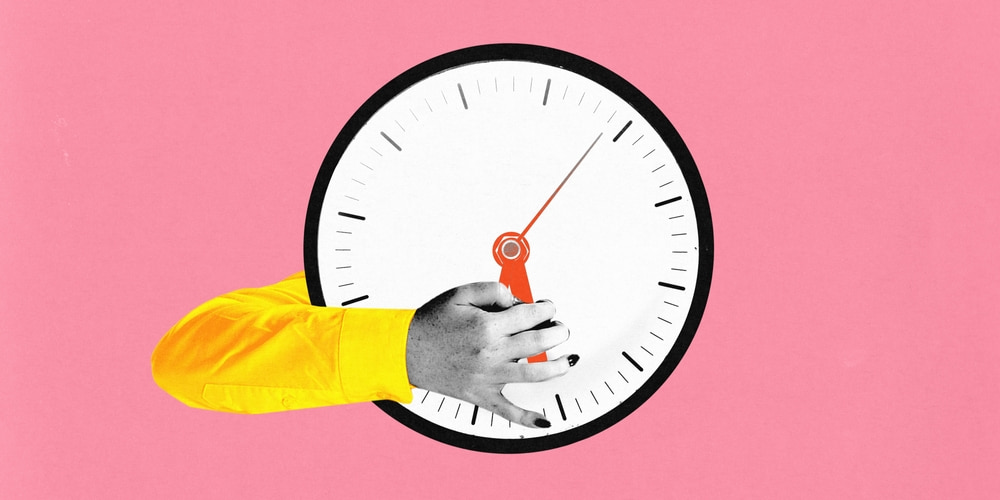

Time Management Tips
- Morning Routine: Wake up 20 minutes earlier for a quick workout.
- Lunch Breaks: Use 15 minutes to do a circuit workout.
- Evening Wind-Down: Stretch or do light exercises before bed.
Circuit Training Example
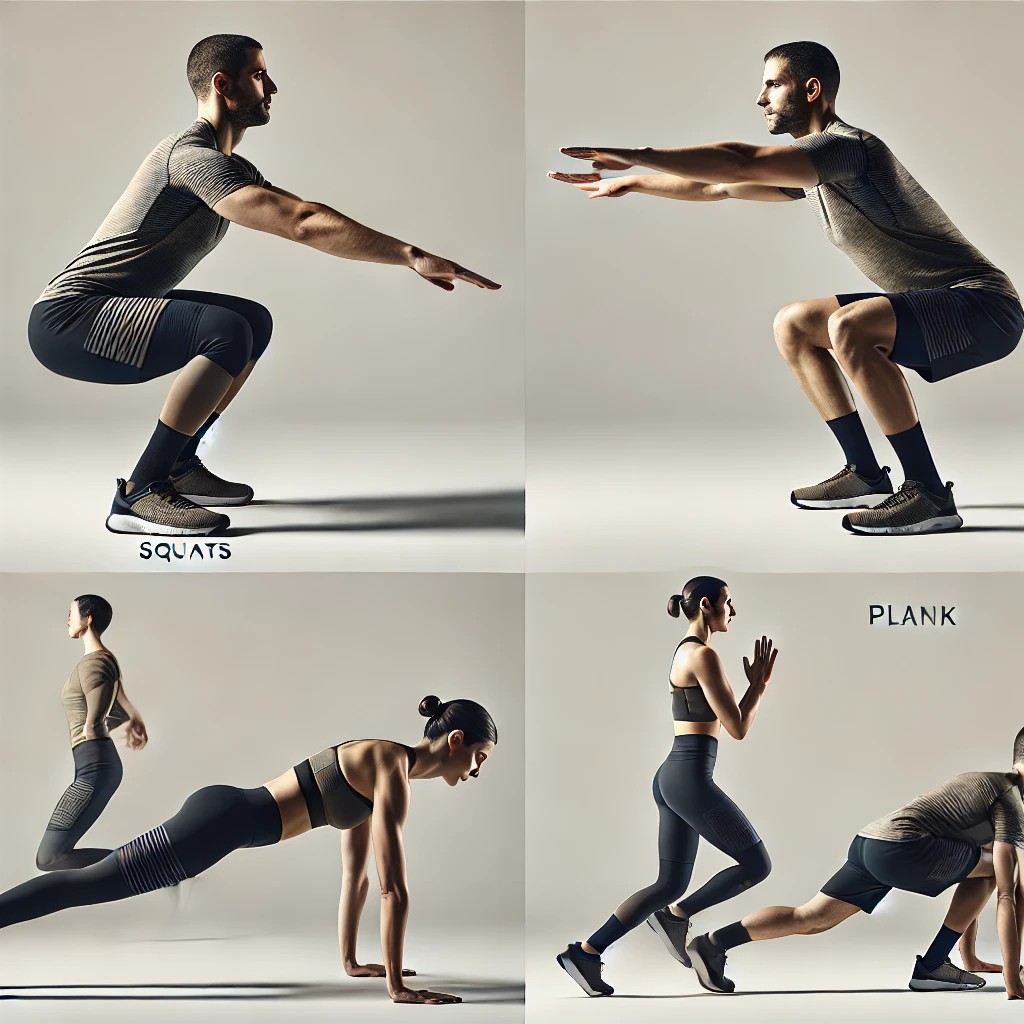

Perform each exercise for 30 seconds, rest for 15 seconds, and repeat the circuit 2-3 times:
- Squats
- Push-Ups
- Plank
- Lunges
Adjusting for Progress
- Add Reps: Gradually increase repetitions as you get stronger.
- Increase Sets: Move from 2 sets to 3 or 4 over time.
- Challenge Yourself: Try advanced variations like jump squats or one-leg planks.
Success Story — Maria’s Routine
Maria, a busy nurse, followed a 20-minute circuit workout three times a week. Over six months, she increased her endurance, toned her body, and even inspired her colleagues to join in. “The key is commitment,” she shares.
Staying Motivated and Overcoming Challenges
Common Challenges and How to Tackle Them
1. Lack of Time
- Solution: Break workouts into smaller sessions. Even 10 minutes is better than nothing.
2. Loss of Motivation
- Solution: Set realistic goals and track your progress. Celebrate small wins.
3. Plateaus
- Solution: Mix up your routine by trying new exercises or increasing intensity.
4. Limited Space
- Solution: Perform compact exercises like planks, push-ups, and bodyweight squats.
Tips for Long-Term Motivation
- Find a workout buddy or join online fitness communities.
- Reward yourself for sticking to your plan.
- Keep a fitness journal to document improvements.
- Focus on how exercise makes you feel rather than just physical results.
Inspiring Story — David’s Comeback
David, a 50-year-old teacher, began his fitness journey after a health scare. With bodyweight exercises, he improved his stamina, lost 20 pounds, and regained confidence. His mantra? “Start small, but don’t stop. Progress is progress.”
Bodyweight exercises are a versatile and effective way to stay fit, even for the busiest individuals. By starting small, staying consistent, and adapting your routine over time, you can achieve remarkable results. Remember, fitness is a journey—embrace it one step at a time.

